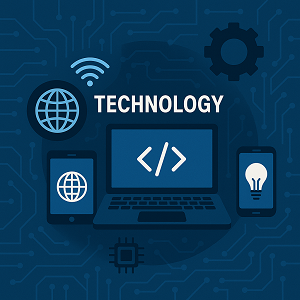TL;DR
- The Dell EMC PowerSwitch S5248F-ON now supports firmware v3.40.5.1-4 and v3.40.5.1-20, improving system health and security.
- Upgraded compatibility helps optimize multi-vendor software-defined networking (SDN) deployments.
- Ideal for high-performance data centers requiring dense 25/100GbE connectivity.
- Supports Dell SmartFabric Services, Open Networking, and automation integration through APIs.
- Enhanced system monitoring and telemetry features reduce downtime and operational complexity.
- Latest drivers and updates are available through Dell Support page.
What’s New or Important Now (2025)
Dell Technologies continues to evolve its open networking portfolio, with the Dell EMC PowerSwitch S5248F-ON receiving significant firmware enhancements in version 3.40.5.1-4 and the subsequent 3.40.5.1-20 release. According to Dell Support, these updates enhance system health, improve stability, and extend compatibility with third-party network operating systems (NOS).
In early 2025, this platform remains a cornerstone for scalable enterprise and cloud network infrastructures. Dell’s latest firmware updates also address security advisories reported in recent months, ensuring the S5248F-ON continues to meet compliance requirements for modern data centers.
Overview of the Dell EMC PowerSwitch S5248F-ON
The PowerSwitch S5248F-ON is a high-density, top-of-rack (ToR) switch engineered for enterprise and cloud computing environments. It supports up to 48 ports of 25GbE and six ports of 100GbE uplinks, making it well suited for east-west traffic loads and modern, containerized workloads.
Because it is an Open Networking (ON) platform, customers can decouple the hardware from the network operating system (NOS), providing flexibility to deploy Dell SmartFabric OS10 or a third-party NOS such as SONiC. This design aligns with companies moving toward infrastructure-as-code and network automation strategies.
Use Cases and Buyer/Architect Guidance
- Enterprise Data Centers: Use as a ToR switch for 25GbE access and 100GbE uplinks.
- Cloud Edge Deployments: Ideal for open networking environments running automation frameworks (e.g., Ansible, Terraform).
- High-Performance Computing (HPC): Enables low-latency fabrics.
- Campus Cores: Suitable as a high-speed aggregation switch for converged workloads.
Sizing considerations: For mid-size data centers (100–400 nodes), use one S5248F-ON per 24–48 servers with dual attachment for redundancy. For larger cloud deployments, pair multiple units with 100GbE leaf-spine architecture.
Trade-offs: While the S5248F-ON delivers cutting-edge performance, its open networking philosophy requires diligence in selecting and maintaining the correct NOS and automation toolchains.
Comparison Table
| Model | Port Configuration | Throughput | Supported NOS | Ideal Use Case |
|---|---|---|---|---|
| Dell EMC S5248F-ON | 48x 25GbE + 6x 100GbE | Up to 2.0 Tbps | OS10, SONiC | Enterprise / Data Center ToR |
| Dell EMC S5296F-ON | 96x 25GbE + 8x 100GbE | Up to 4.0 Tbps | OS10 | Large Data Center Leaf |
| Dell EMC S5232F-ON | 32x 100GbE | Up to 6.4 Tbps | OS10, SONiC | Spine / Core Switch |
| Cisco Nexus 9336C-FX2 | 36x 100GbE | 7.2 Tbps | Nexus OS | Core Aggregation |
Mini Implementation Guide
Prerequisites
- Access to Dell Support downloads for the latest firmware (v3.40.5.1-20).
- Console access via serial or SSH.
- Validated NOS image (OS10 or SONiC).
- Proper network design schema and IP addressing plan.
Steps
- Verify current firmware using the CLI command
show version. - Backup configuration using
copy running-config tftp://. - Download and install the latest firmware package via the Dell Support portal.
- Reboot the switch for updates to take effect.
- Validate OS and driver compatibility with new firmware.
- Implement standard automation scripts for monitoring and configuration management.
Common Pitfalls
- Skipping the backup step before firmware upgrade may result in configuration loss.
- Neglecting to check NOS compatibility can cause boot failures.
- Overlooking license management for certain advanced OS10 features.
Cost and ROI Considerations
The S5248F-ON provides a balance between cost-efficiency and high density. Pricing typically ranges between $17,000 and $24,000 depending on optics and support packages (source). The open networking model reduces long-term operating costs by allowing customers to choose their preferred NOS or automation tools, extending the switch’s lifecycle beyond vendor lock-ins. ROI is realized within 12–24 months for medium data center deployments due to reduced licensing and greater automation savings.
Frequently Asked Questions
1. What firmware version should I use in 2025?
Firmware v3.40.5.1-20 is the latest recommended version ensuring enhanced security and stability.
2. Can I run SONiC on the S5248F-ON?
Yes, SONiC is officially supported as a third-party NOS on the Open Networking platform.
3. Is the switch compatible with SmartFabric Services?
Yes, it integrates seamlessly with Dell SmartFabric Services for automated fabric orchestration.
4. How many 100GbE uplinks are available?
There are six 100GbE QSFP28 uplink ports suitable for spine connectivity.
5. What power options are supported?
The S5248F-ON supports dual hot-swappable power supplies, AC or DC depending on configuration.
6. What’s the warranty policy?
Dell offers Limited Lifetime Warranty and ProSupport Plus options for enterprise continuity.
Conclusion
The Dell EMC PowerSwitch S5248F-ON continues to stand as a flexible, open networking solution for modern enterprise connectivity. With the latest firmware and support updates, organizations gain improved reliability, performance, and interoperability. As networking demands continue to evolve in 2025, the S5248F-ON remains a smart choice for data center architects seeking scalability and control. To deepen your understanding of Dell infrastructure solutions, visit LearnDell Online.

